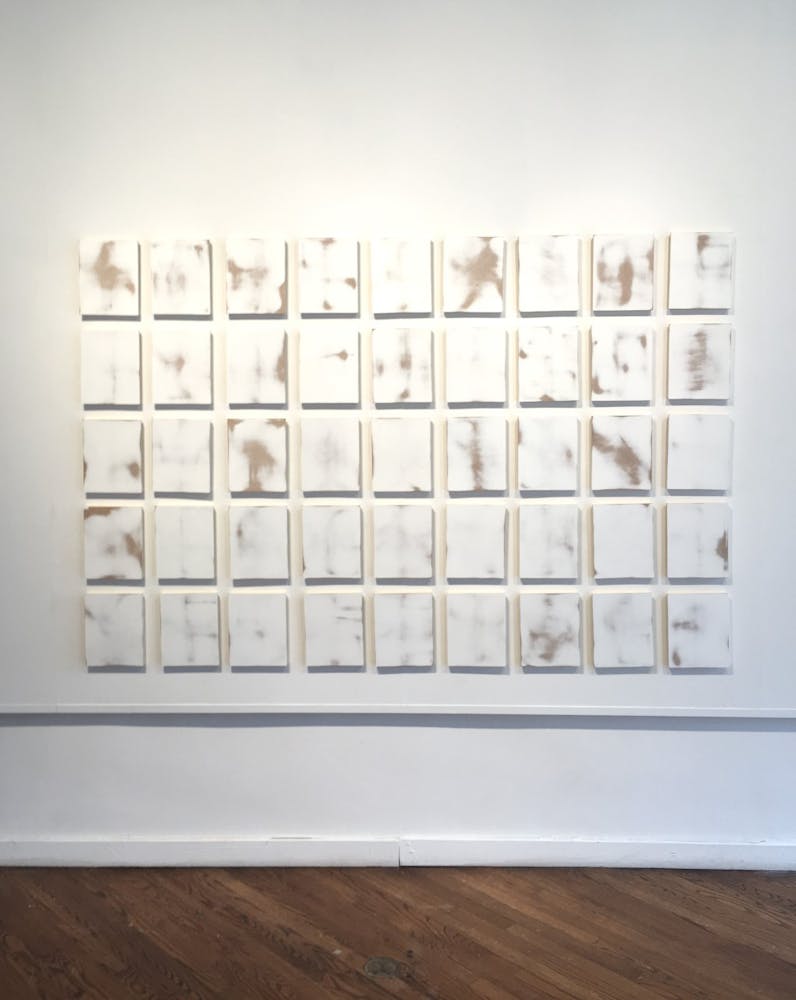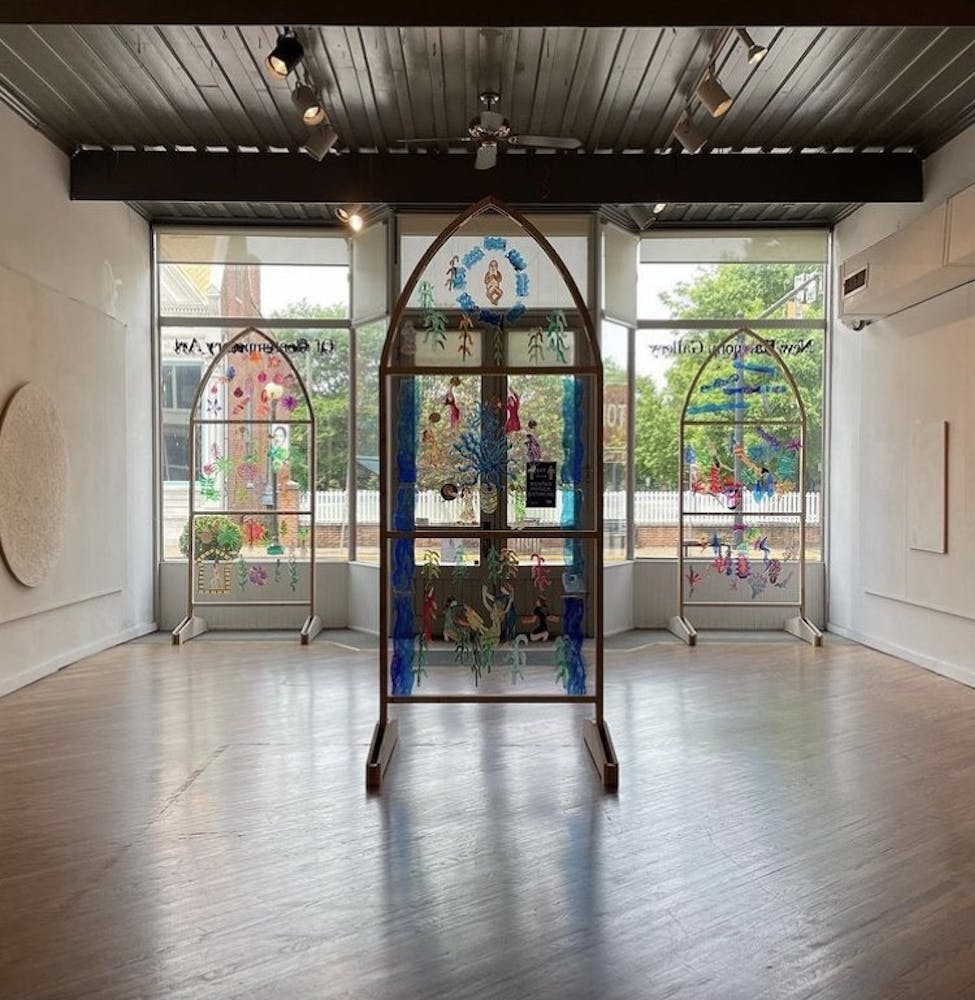New Harmony, Indiana is a town on the edge of the state, right by the Illinois border, with a population of just more than 800 people. New Harmony was founded in 1814 to experiment with the use of utopias, and has been a hub for growth in politics, music and art.
Audrey Barcio, Ball State assistant professor of art, and Rachel Cohn, assistant professor of art and foundations coordinator, are displaying their art in the New Harmony Gallery of Contemporary Art, which is run through the University of Southern Indiana. The gallery opened May 15 and will close June 26.
According to the gallery website, “Ideas of utopia and dystopia have long influenced these artists and their work” and the art explores “concepts of memory, mythology and community.”
The show is titled “Sapienta Gloria Corona Est,” which is Latin for “Wisdom is the crown of glory,” which was the motto of the Minerva Society — a New Harmony feminist group the show is named after, according to a press release.
“First, [the exhibition] started as it being related to us both being women, and I think that our take on femininity or womanhood was very different in the work,” Cohn said.
Cohn completed one project for the show — a reflective wall piece that stands near the front of the exhibition and is three parts, each displaying a different type of image while the sunlight hits it and fills the room.
“I made it in seven weeks on this research trip [to New Harmony],” Cohn said. “It’s really important to me that, in my work, I learn about and spend time in a place, and react to that place.”
Cohn said she traveled to New Harmony to look at the gallery, and while she was there, she saw the building had windows that let in natural light and lit up the inside of the building.
“That’s how I kind of came to make these sort of deconstructed stained-glass windows that reflected the place and the energy of New Harmony, which is a place I’m not very familiar with, but was struck by the sort of peaceful spirituality of that community,” she said.
Barcio completed several pieces about five years ago, not originally for the exhibition, that were selected for display. Each piece varies in size and is placed on the walls of the exhibition.
“My paintings are installed on three walls,” Barcio said. “They are all minimal in color and have beveled edges with either 24 karat gold or fluorescent paint, giving a back glow onto the wall.”
Barcio said her work in the New Harmony Gallery of Contemporary Art focuses on the human condition, what it means to be alive and existential concerns. Each of these themes are reflected in the history of New Harmony, she said, and what it has seen since the town was founded in the early 19th century.
Barcio said she and Cohn were presented with the opportunity to participate in the show by Shauta Marsh, curator of the exhibition.
“She reached out to both of us and asked if we would be interested in being in a two-person exhibition,” Barcio said. “She came up with the theme, the writing and the title of the show, then, Rachel and I brought our own work down there.”
Marsh is a guest curator for the New Harmony Gallery of Art and the co-founder and director of programming and exhibitions at Big Car Collective in Indianapolis. Marsh said she began researching utopias about five years ago when she started work with the Social Alchemy Project, a group that studies utopias, dystopias and social design projects.
She said she is “really happy” with how the exhibition turned out, and believes Cohn and Barcio’s works reflect each other nicely, and each visitor will feel drawn to either type of work.
Marsh said, “It’s almost like a conversation between two different people when you walk into the gallery.”
Contact Maya Wilkins with comments at mrwilkins@bsu.edu or on Twitter @mayawilkinss.







